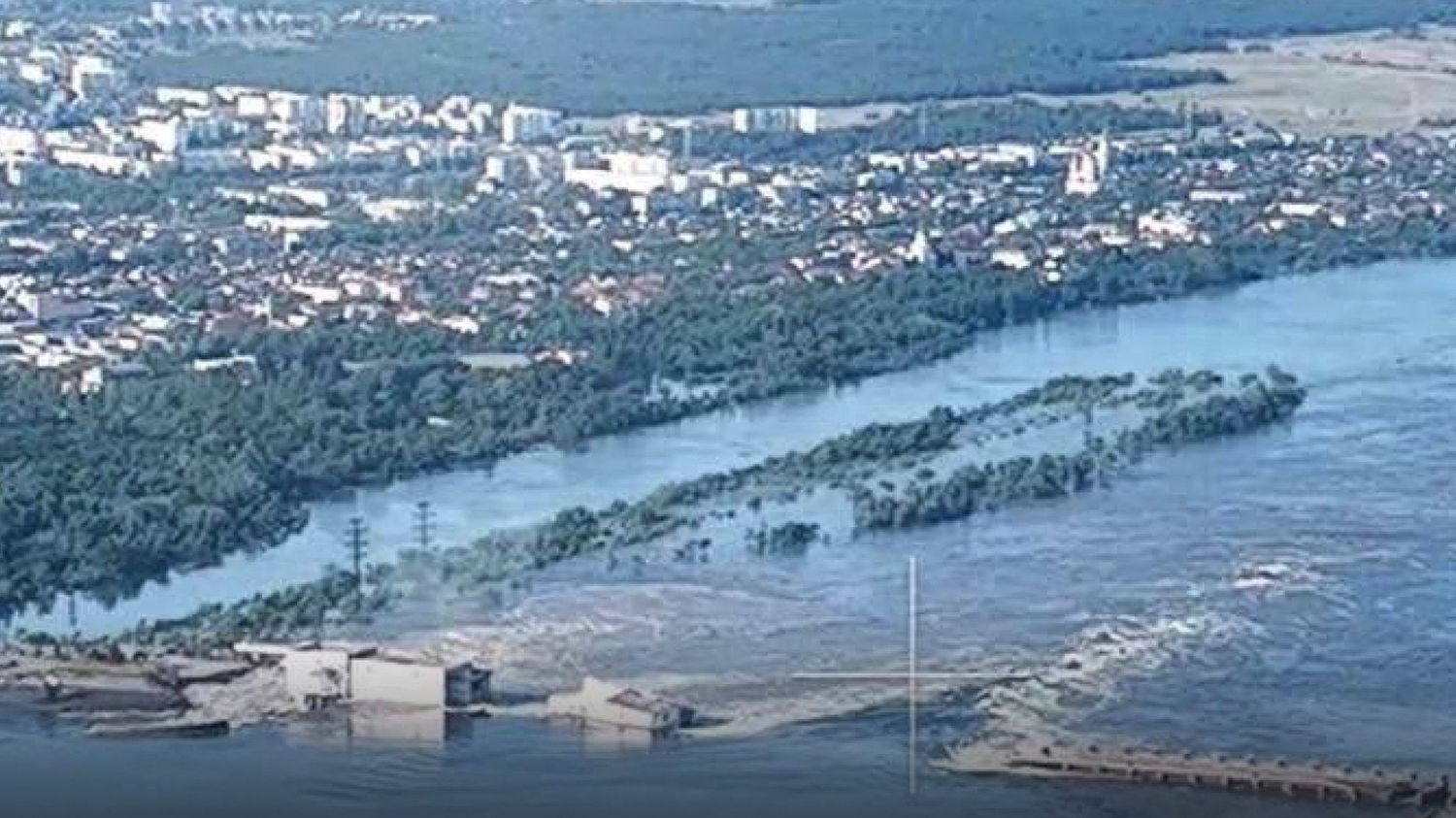An explosion, which kyiv and Moscow accuse each other of being responsible for, has severely damaged the infrastructure near Kherson.
“Russia’s actions are the actions of a terrorist state.” The Ukrainian representative to the UN accused Moscow of being responsible for the destruction of the Kakhovka dam in southern Ukraine on Tuesday, June 6, before the International Court of Justice. The explosion, which occurred early in the morning, “caused major civilian evacuations and serious ecological damage”, added Anton Korynevych. Russia denies being behind the attack, saying instead that kyiv caused the damage.
Images shared by Ukrainian authorities or released by news agencies show the extent of the damage.
>> Follow the latest information on the war in Ukraine in our live
Ukrainian President Volodymyr Zelensky posted on Telegram a video filmed by a drone above the Kakhovka dam. You can see torrents of water rushing through the gigantic breach opened in the infrastructure, one of the largest of its type in Ukraine. Upstream of the structure is the Kakhovka reservoir, an artificial water reservoir formed on the course of the Dnieper, 240 km long and up to 23 km wide.
Andriï Yermak, adviser to the Ukrainian presidency, also posted several videos on the social network. In one of them, filmed on Potemkin Island, the water almost reaches the roofs of the houses. Another shows the rising waters in the center of Nova Kakhovka, a town near the dam.
Thousands of people threatened
First photos of partially flooded localities near Kherson were published by media on Tuesday morning. Kyiv felt that“about 16,000 people are in the critical zone” and are threatened by flooding. The Ukrainian Prime Minister specified that up to 80 localities were concerned.

The local authorities installed by Russia have, for their part, estimated that 14 localities where reside “more than 22,000 people” were threatened. “According to the emergency services, the water has risen (…) to a level of between 2 and 4 meters, which does not threaten large localities” below, Andrei Alekseyenko, head of the occupation government of the Kherson region, said on Telegram. He asserted, however, that “the situation is completely under control”.

Ukraine’s Interior Ministry has shared first images of ongoing evacuations in the Kherson region, saying 885 people had already been able to leave the area by 11 a.m. local time. The operations take place by car and by train, in the direction of Mykolaiv.
Another image of the damage was released Tuesday morning by Ukrainian nuclear operator Energoatom. The Kakhovka reservoir, the level of which drops by about five centimeters per hour, provides cooling for the Zaporijjia power station. There is “no immediate nuclear danger” on the site, however, assured the International Atomic Energy Agency (IAEA), stressing that its experts were monitoring the situation.
As the president of the company Energoatom, Petro Kotin, recalled, there is also a cooling basin, separate from the tank, higher up. And since the reactors have been shut down for a long time, IAEA experts believe “that this basin will be sufficient to supply the plant with water for months”.
